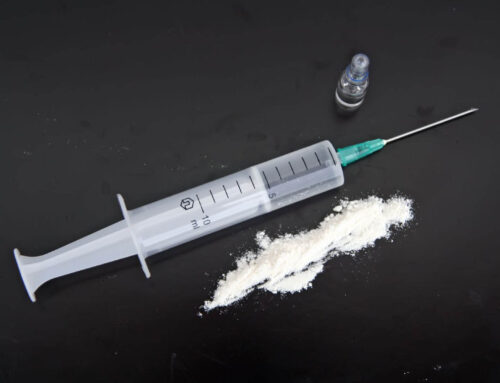
Psychiatrist Appointment: Post-Traumatic Stress Disorder and Adjustment Disorder
Clinical Symptom Description
Post-traumatic stress disorder (PTSD) and adjustment disorder are reactions to stressful or traumatic events that lead to significant disruptions in emotional well-being and daily functioning. However, these disorders differ in both symptom severity and duration.
Post-Traumatic Stress Disorder (PTSD):
PTSD arises after experiencing or witnessing a traumatic event that threatens one’s life or safety. PTSD symptoms can be divided into four categories:
- Intrusive Memories and Experiences:
-
- Flashbacks (the sensation of reliving the trauma).
- Intrusive and distressing memories of the event.
- Nightmares and disturbing dreams about the trauma.
- Avoidance:
-
- Avoiding places, people, conversations, and situations associated with the trauma.
- Efforts to suppress memories and emotions related to the event.
- Negative Changes in Thinking and Mood:
-
- Feelings of detachment and emotional numbness.
- Loss of interest in previously meaningful activities.
- Negative beliefs about oneself, others, or the world (“I am worthless,” “The world is unsafe”).
- Increased Arousal and Reactivity:
-
- Hypervigilance and being easily startled.
- Irritability, anger outbursts, sleep disturbances, and difficulty concentrating.
Adjustment Disorder:
Adjustment disorder occurs as a response to stressful life changes that are not necessarily life-threatening. Such stressors include job loss, divorce, relocation, or the loss of a loved one. Symptoms of adjustment disorder include:
- Emotional Symptoms: Anxiety, sadness, apathy, hopelessness.
- Behavioral Symptoms: Social withdrawal, avoiding responsibilities, poor performance at work or school.
- Physical Symptoms: Fatigue, insomnia, headaches, and gastrointestinal issues.
Symptoms of adjustment disorder usually appear within three months of the stressful event and do not persist for more than six months after the stressor ends.
Disease Prevalence
Post-traumatic stress disorder is prevalent among a significant portion of the population, particularly those who have experienced traumatic events. Research indicates:
- Approximately 3-4% of the population suffers from PTSD at any given time, with lifetime prevalence ranging from 7-8%.
- Among veterans and individuals who have experienced violence or disasters, PTSD rates can reach 20-30%.
- Women are twice as likely as men to develop PTSD, largely due to a higher likelihood of experiencing violence and trauma.
Adjustment disorder is an even more common condition, observed in 5-20% of individuals seeking psychiatric care, particularly during periods of major life changes. Its prevalence is higher among adolescents and young adults due to their vulnerability to stressful events.
Risk Factors and Predispositions
The development of PTSD and adjustment disorder depends on a combination of biological, psychological, and social factors:
- Traumatic Experience:
-
- Experiencing violence, disasters, accidents, wars, or the sudden loss of a loved one.
- Repeated trauma or prolonged exposure to a stressor, as seen in cases of domestic violence.
- Genetic Predisposition:
-
- Studies show that having relatives with PTSD increases the risk of developing the disorder.
- Psychological Factors:
-
- High levels of anxiety and emotional sensitivity.
- Low self-esteem and lack of coping skills.
- Social and Cultural Factors:
-
- Lack of social support after the trauma.
- Poverty, unemployment, and the stigma surrounding mental illness.
- Pathophysiological Changes:
-
- Imbalances in neurotransmitters like dopamine and norepinephrine.
- Hyperactivity in the hippocampus and amygdala, brain structures responsible for memory and emotional reactions.
Treatment Methods
Effective treatment of PTSD and adjustment disorder requires a comprehensive approach involving both pharmacotherapy and psychotherapy.
Pharmacological Treatment
- Antidepressants (SSRIs):
-
- Medications such as sertraline, paroxetine, and fluoxetine are the first-line treatments for PTSD. They reduce anxiety, depression, and emotional hyperarousal.
- Mood Stabilizers:
-
- Drugs like valproic acid and carbamazepine help manage irritability and impulsivity.
- Anxiolytics:
-
- Short-term use of benzodiazepines (e.g., diazepam, clonazepam) can alleviate anxiety symptoms but should be used cautiously due to the risk of dependence.
- Atypical Antipsychotics:
-
- In severe cases of PTSD, risperidone or quetiapine may be prescribed to control hyperactivity and sleep disturbances.
Psychotherapy
- Cognitive-Behavioral Therapy (CBT):
-
- CBT helps patients recognize and change negative beliefs and reactions caused by trauma. Exposure therapy gradually reintroduces patients to traumatic memories to reduce emotional responses.
- EMDR (Eye Movement Desensitization and Reprocessing):
-
- This method combines attention to traumatic memories with eye movements, helping to reprocess emotional responses to trauma.
- Group and Family Therapy:
-
- These approaches provide support from others and improve family interactions.
- Psychoeducation:
-
- Educating patients and their families about the disorder helps reduce fear and stigma.
The Role of the Psychiatrist in Diagnosis and Treatment
The psychiatrist plays a key role in managing patients with PTSD and adjustment disorder. Their primary responsibilities include:
- Diagnosis:
Conducting a detailed clinical interview using diagnostic criteria from DSM-5 or ICD-11 to identify symptoms and their relation to the traumatic event. - Treatment Planning:
Developing an optimal treatment strategy that combines medications and psychotherapy, tailored to the severity of the patient’s condition. - Monitoring Progress:
Regular visits to the psychiatrist help track the disorder’s progress, adjust treatment, and prevent relapses. - Family Support:
Assisting family members in understanding the nature of the disorder and building effective support systems for the patient.
Conclusion
Post-traumatic stress disorder and adjustment disorder are serious mental health conditions that arise in response to stressful or traumatic events. PTSD is characterized by chronic intrusive memories and hyperreactivity, whereas adjustment disorder is often linked to everyday stressors.
Timely diagnosis, comprehensive treatment, and the involvement of a psychiatrist are crucial to restoring patients’ mental health. Pharmacological therapy combined with cognitive-behavioral therapy significantly reduces symptoms and helps patients return to a fulfilling life. Family and close support also play a critical role in successful adaptation and preventing relapses.
Psychiatrist Appointment:
If you need to consult a psychiatrist or seek psychiatric care for post-traumatic stress disorder or adjustment disorder, select a specialist and book a time. During the consultation, our psychiatrist will help address your mental health concerns and find appropriate solutions.



